The balcony antenna is the best option if the installation of the street analogue on the roof of the building is impossible for any reason. The fact is that the roof of an apartment building is a general-purpose property and is managed by the management company.
Therefore, access to it can be limited, and to install antenna, you should obtain permission to manage the management organization (which is not always possible). The only option for street placement of the receiving device in this case is the balcony.
Advantages of street antennas before indoor

With the help of a balcony antenna, you can not only take a television and radio signal, but also bind to radio amateurs
Balcony antennas can be used both for receiving signals of television and radio stations and for transfer such. Also using balcony antenna antenna can be configured between amateur radio stations.
As long as it is noticed, the antennas made on the street work much more efficiently of their room analogues. This is due to a number of physical features of the propagation of radio waves in space. The propagation of radio waves in a closed room is significantly different from their movement in the open space.

Interference can occur indoors, so the balcony antenna takes a signal much better
Inside the room, due to the repeated reflection of the walls and objects, the effect of interference occurs - the imposition of the waves on each other. At the same time, a chaotic gain or a decrease in the signal is often observed, resulting in interference.
Influence the quality of the reception of the room antennas can the most minor, it would seem that factors - the installation site of a TV or radio, moving people around the room, etc.
Also, the walls of the building are significantly quenched by the radio signal, especially concerns monolithic reinforced concrete or panel houses: metal fittings included in the design of walls and ceilings. All these shortcomings are devoid of antennas installed in the open space - outdoors.
Article on the topic: Mobile with butterflies do it yourself
However, the installation of the receiving device on the roofs has recently been significantly limited due to the fact that they are managed by management companies.
Unauthorized installation of TV antenna can lead to an undesirable conflict with the operating organization.
As a result - more and more residents of modern high-rise buildings are placed by accepting antennas on their own balconies and loggias.
Features of the work of shortwave antennas
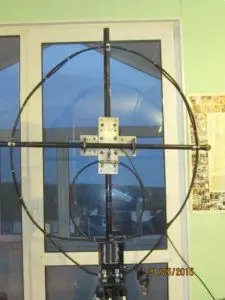
A shortwall antenna today can be either purchased in specialized stores, or make it yourself. True, in order for the device you created perfectly worked, you should have some knowledge of electronics.
Short waves are also referred to as decameral due to the wavelength of 10 - 100 m. The frequency range of decameral waves is from 3 to 30 megagoz. The main feature is that when reflected from the ionosphere and the Earth KV-Waves carry minimal losses. As a result, they are capable of spreading to sufficiently long distances, keeping a good signal.
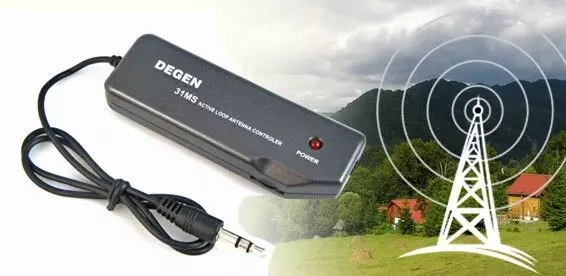
Among the features of the SV-waves, it can be noted that the quality of their reception may depend on some factors:
- level of solar activity. Solar radio emission can make minor interference, worsening the quality of the host equipment;
- time of day. It is noted that short waves are best distributed in the bright time of the day, while the waves of the long range is best due to the best;
- Weather conditions. Low cloudiness and fog can somewhat weaken the transmitting power of shortwave stations.
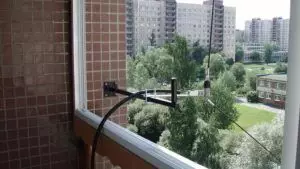
All listed factors are particularly significantly affected by the balcony antennas. Therefore, setting the receiving KV design to your balcony, you should be prepared for some features of their work. Shortwave antennas can also be used to establish communication with spacecraft due to the fact that the KV-Waves cannot penetrate through the Earth Ionosphere.

For this reason, such devices cannot be used for receiving a signal from television satellites. During receipt of the signal in the short range, some problems may also occur also due to the fact that the KV-waves apply to various trajectories. As a result, the emergence of "fading" or short-term disappearance of the signal.
Article on the topic: Place above the bedroom bedroom: Decor and design ideas (37 photos)
But despite all these minor inconveniences, shortwave devices provide a lot of advantages, the main thing is the possibility of receiving a qualitative signal from remote radio stations and the possibility of sustainable communication between radio amples remote from each other.
Assembly and installation of a shortwave antenna
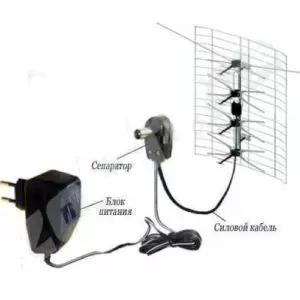
If you have some experience in the radio mechanic, it is possible to create a shortwave antenna with your own hands. Suppose we need a receiving device for 7 MHz.
To create it, first of all, we need a ferrite tube. You can find it in the well-developed computer keyboards or monitors. In the cables there, the ferrite tube is used to suppress no interference.
As was noticed by a kind of radio amateur, such ferrite tubes react to the waves of the range of the range by reactive impedance (capacitive and inductive resistance) by force in the range of several hundred ohms. For details on the assembly and installation of a simple antenna, see this video:
These properties of ferrite tubes allow you to create with your own KV antenna to the balcony. From this tube, we collect a broadband transformer with a transformation coefficient of 1: 1. This will be the main element of our future balcony antenna. In radio engineering, such a transformer is denoted by the Balun English abbreviation - from Balanced-to-Unbalanced Transformer, which is translated as "balanced - unbalanced transformer."
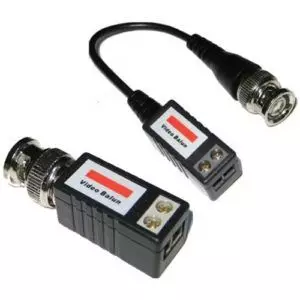
To determine the working range of the received balun, load its secondary winding through a 50-ohm resistor with a high-frequency bridge. If the range does not match the desired one (7 MHz), then we take another tube until we obtain the desired frequency indicator.
After that, we replace the resistor into two halves of the dipole. As a result, we obtain the dipole of the half-wave length, devoid of the central insulator. The ferrite tube has a nourishing coaxial cable in the form of hinges.
Filling a sq-antenna on the balcony
The sq-antenna form may be different. Most common:
- Mast version. In this case, the antenna on the balcony is installed on a certain mast ("rod"). It looks like this option as a standard antenna structure, in the center of which is located a transformer (Balloon), and diverges from it are diverged dipoles catching radio waves. The mast is fastened to the fencing of the loggia or vertically, or is made at some angle for fences. You can install the most efficient location in an experienced way.
- "Square". This is the most efficient design option that allows you to significantly increase the sensitivity of the device and reduce side noises. This design is recommended for "noisy" (in the sense of radio domain) areas located in the city center. Such an antenna kV can be installed on balcony fences, attaching to them with any girlfriend fasteners.
Article on the topic: Sheltered polyethylene for a warm floor: Pipe installation
At the same time, the lower part of the "square" (and to be more accurate - the rectangle) is connected to the railings of the fence, creating a grounding circuit. The upper part represents the actual cavity of the antenna. The total length of it should be at least seven meters. To do this, you will have to mount the design going around the perimeter of the loyalty of the loggia, along its ceiling and side walls. On how to mount the antenna on the balcony, see this video:
If the railing of your loggia is deprived of metal handrails, the lower, "cold" part of the structure, it will be necessary to ground to any metal part of the balcony fittings. If there is no choice in the design of the loggia design, it will be allowed to "find" the reinforcement metal with a perforator. Another option is to conduct ground wire in the apartment and connect it to the circuit of grounding electrical wiring.
When connecting the ground, expect caution to avoid short circuit, or electric shock.

But since you took on an independent manufacture of such a rather complex technical device, like a sq-antenna, then confuse "Earth" with a "phase" in the electrical wiring scheme you can hardly be able to.
As a result, we get quite reliably working receiving - the transmitting antenna operating in the shortwave range at a frequency of 7 MHz. The main advantage is excellent work in any area of the city, despite the presence of a large number of background noise. After all, the main purpose of such structures is to improve the quality of radio waves.
